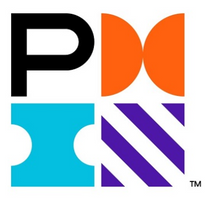Activities generally fall under two distinct categories: Projects and Business as Usual (BAU) / Operations.
According to the Project Management Professional (PMP) framework, as defined by the Project Management Institute (PMI), a project is:

“A temporary endeavour undertaken to create a unique product, service, or result. The temporary nature of projects indicates a beginning and an end to the project work or a phase of the project work. Projects can stand alone or be part of a program or portfolio.”
This means that activities falling under the Project category should:
- Have a clear start and an end date, thus making them temporary in nature.
- They are unique – i.e., they differ from the day-to-day activities, previous assignments, and current product/service offerings.
- The output of these activities can be:
- Tangible – for example, a new physical product,
- Intangible – for example, a new service,
- Results – such as an outcome or improvement.
The PRINCE2 (PRojects IN Controlled Environments) framework, as defined by AXELOS, has a similar but a different definition of a project. According to PRINCE2,

“A project is a temporary organisation that is created for the purpose of delivering one or more business products according to an agreed Business Case.”
This definition focuses on the following:
- Creation of a Temporary Organisation, meaning forming a team with a temporary structure to meet the objectives of the assignment.
- Delivery of Business Products, which produces tangible or intangible outcomes. The most crucial aspect is that these outcomes should provide value to the organisation.
- Agreed Business Case. This means having clear, documented reasons why the organisation is embarking on this project, including the problems or opportunities this assignment aims to address.
I will dive deep into more detail on structures, programs, portfolios, teams, business cases, and other technical jargon discussed in future blogs.
At this point, it is important to note that both PMP and PRINCE2 share the same concept of what constitutes a Project – basically, activities that are temporary in nature and aim to create something unique. Repetitive, ongoing operations and activities that do not produce something different from previous work, products, or services are automatically considered BAU.
While organisations may set their own criteria to define Projects and BAU, it is crucial to keep the fundamental elements of uniqueness and temporality as key factors for categorisation.
Why is it essential for organisations to distinguish between Projects and BAU?
Organisations will be in a much better position to identify opportunities for improvement if they have a clear view of the repetitive, operational activities. This will lead to the identification of new initiatives, such as those related to business process reengineering, which will eventually lead to an increase in overall organisational efficiency and cost saving.
However, this does not imply that the organisation should implement these initiatives right away. These potential initiatives, which will fall under the Project categorisation, must be prioritised on various factors which I will discuss in future blogs. What is important to highlight at this point is that the decision to implement a project should be made in the context of the impact on operational (BAU) activities. This includes the organisation’s ability to absorb change – for example, if the project is about creating and introducing a new product to the market, does the organisation have enough people with the necessary skills to sell the product to the end customers and support them in the event of a problem?
Other important advantages of distinguishing between Projects and BAU include using the proper Risk Management approach, Change Management, Performance Measurement techniques, and Governance and Accountability. All of this will be covered in detail in future blogs, so stay tuned!
I hope you found this interesting. Drop me a message for any queries or comments!
As the objective of this post is to offer newcomers in the field of project management a foundational understanding, I have intentionally simplified certain aspects of the content. If you seek more comprehensive and precise information, please don’t hesitate to reach out.
I’m Jonathan Spiteri, and I bring a wealth of experience in innovation, strategy, agile methodologies, and project portfolio management. Throughout my career, I’ve had the privilege of working with diverse teams and organisations, helping them navigate the ever-evolving landscape of business and technology. I’ve also earned multiple prestigious certifications, such as Axelos Portfolio Director, SAFe® 6 Practice Consultant, Organisation Transformation, Project Management Professional (PMP), TOGAF 9.2, and Six Sigma Black Belt. These qualifications reflect my dedication to achieving excellence and my proficiency across various domains.


